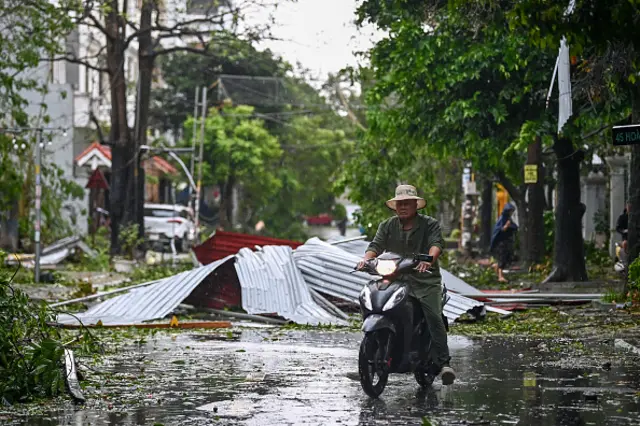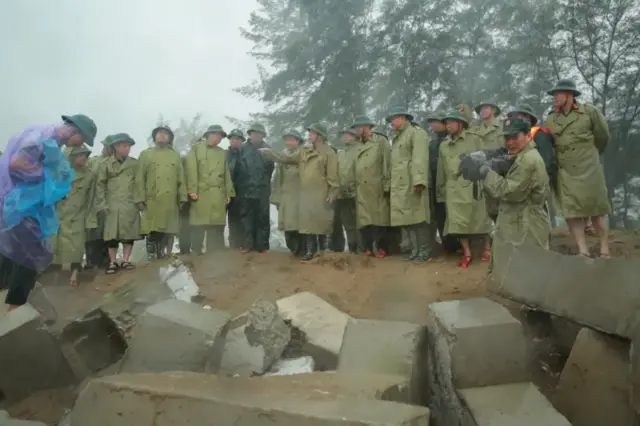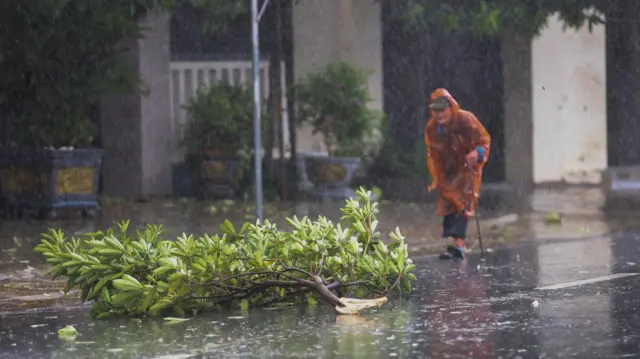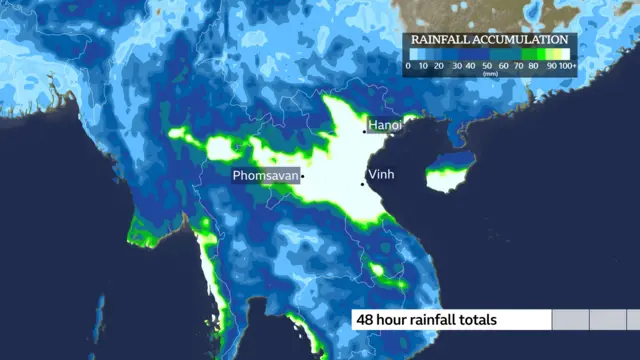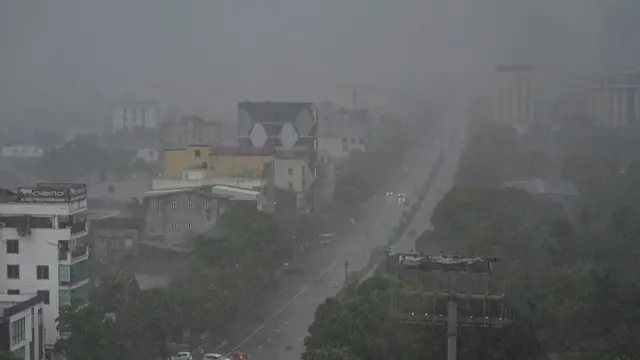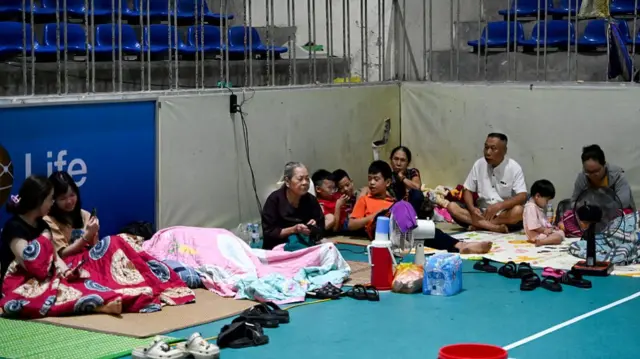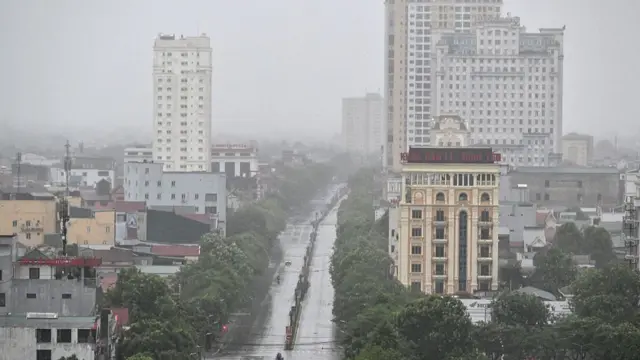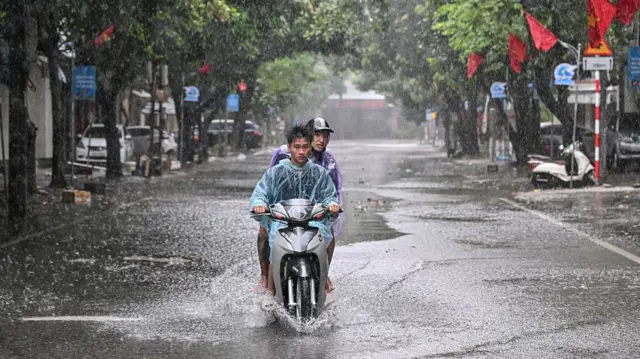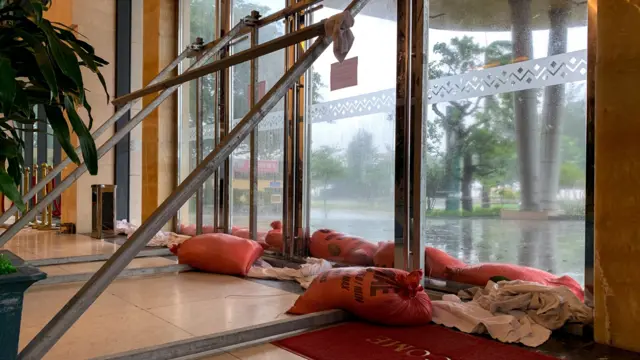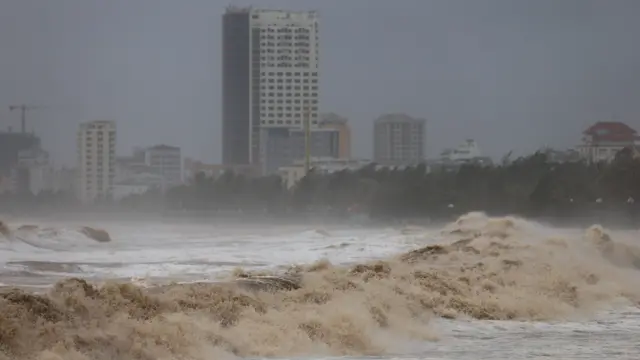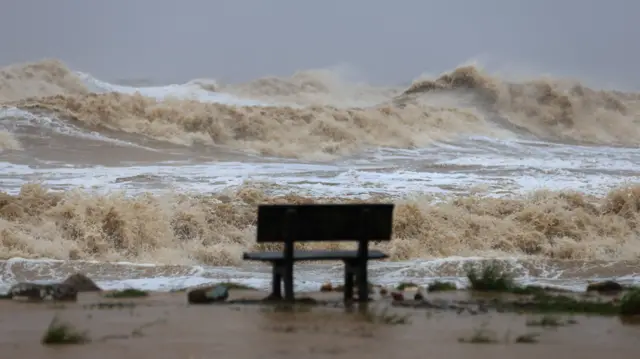We are now pausing our live coveragepublished at 13:53 BST 25 August
 Image source, AFP via Getty Images
Image source, AFP via Getty ImagesTyphoon Kajiki made landfall in Vietnam on Monday afternoon, battering the country's coastal provinces with winds of up to 118-133 km/h.
Vietnamese authorities have said it could be as powerful as Typhoon Yagi - its most powerful storm in 30 years - which killed 300 people when it hit last year.
While the storm has decreased in intensity, the wind speeds remain high, the country's weather forecasting service said.
Close to 600,000 people were ordered to leave their homes in the coastal province of Ha Tinh. Central provinces of Thanh Hoa, Quang Tri, Hue and Da Nang were also ordered to evacuate.
Flights have also been suspended at two airports in its central region along with some train services. Meanwhile road travel has been suspended in Ha Tinh, a northern coastal province.
Vietnam isn't the only country facing off Typhoon Kajiki, which earlier skirted past China's Hainan island and brought heavy rain and strong winds to southern China.
Authorities in Thailand have also sent weather warnings to 58 provinces as the typhoon approaches the country. There have been warnings of flash floods, runoffs and landslides could hit the country.
We are pausing our live coverage here for now but we'll be sure to keep our news story up to date with any developments.

